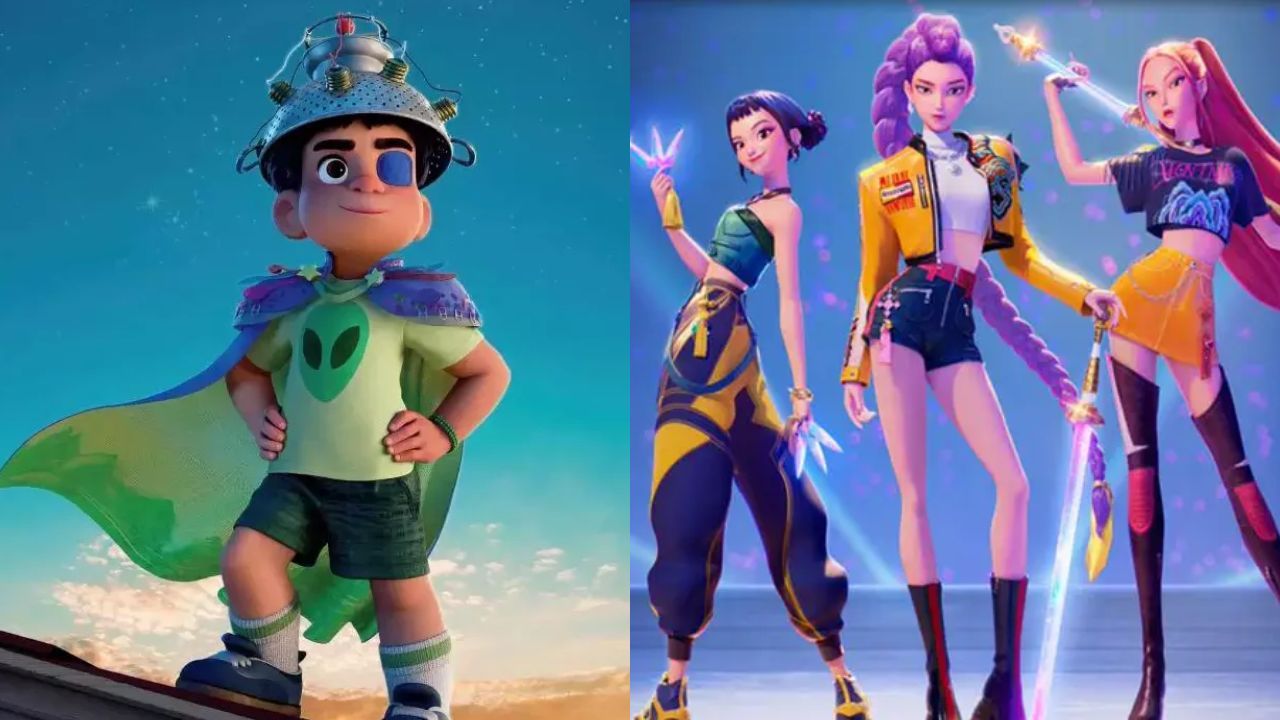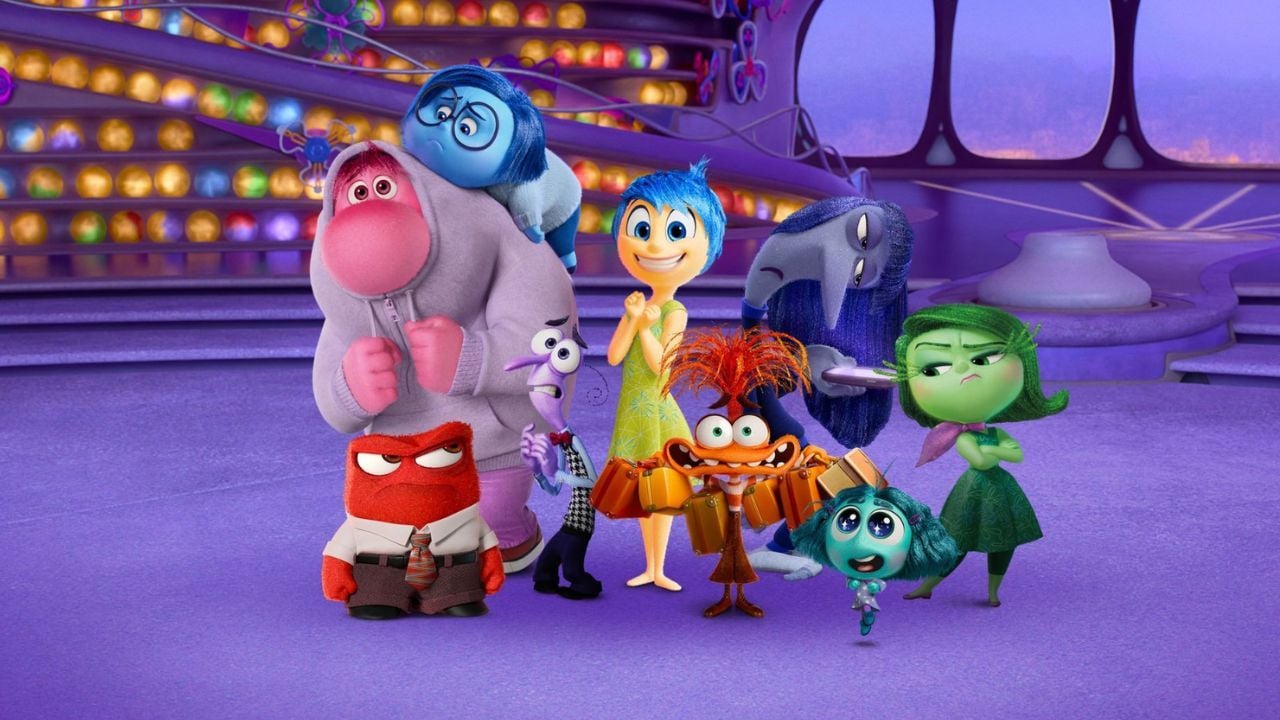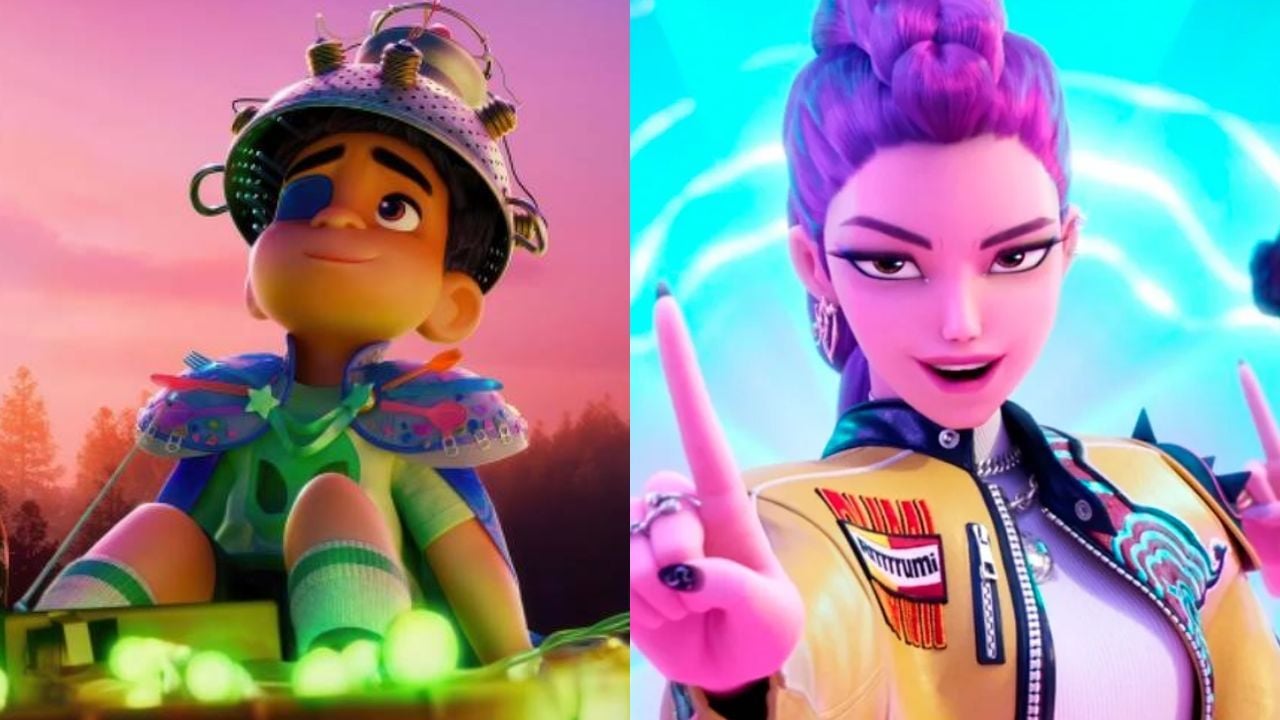We live in an ambiguous era in the animation industry: while we have works that allow themselves to innovate with the most creative ideas that language can achieve, there is a certain decline in the impact of original entries.
Although cinema in general is currently under the pressure of a battle between established franchises and original ideas, animated films and series have always been subdued within this whole. It’s almost like that beloved cousin in the family whom everyone loves but who isn’t always invited to the party.
Speaking of 2025, we have two major releases already heading toward awards season:
Elio
, a Pixar’s long-gestating film that suffered numerous production issues and has already attained the status of the studio’s worst opening, and
K-Pop Warriors
, a Sony Pictures Animation project distributed by Netflix, made from ingredients with high viral potential.
On social media, a debate has linked the two productions beyond basic terms: there’s a discussion about how one title gained more visibility than the other, even though neither belongs to established franchises. First of all, putting them on the same scale isn’t a completely fair comparison—even if it leads us to very relevant questions.
Elio x K-Pop Warriors

Elio had less promotion than other Disney productions, which not only resulted in the film’s low popularity at the box office but also fueled the narrative that audiences are no longer open to original stories. However, Guerreiras do K-Pop also didn’t receive intense promotion, yet achieved success sufficient enough to place it in Netflix’s Top 10 since its release, along with generating significant buzz on social media. And now?
Both are great movies, but this debate takes us to even deeper places than whether we liked it or not, if it’s good or not. When comparing the two, the lack of symmetry is rooted in the context in which each movie was released. The balance isn’t even, as it’s much easier to have access to a film available on a streaming service than to pay to watch it in theaters. It’s about cost, access, and exposure.
That’s why the discussion doesn’t need to be driven solely by competitiveness, but should help us reflect on all the factors that hinder the good performance of an original story. It’s hard to recognize this, but there is indeed a lack of interest from audiences toward new intellectual properties: even the best movies from debut sagas have performed worse than sequels in recent years.
Does the public no longer like original stories?

In 2024,
Inside Out 2
reached $1.6 billion at the box office alongside
Moana 2
that made a little over 1 billion and
My Favorite Villain 4
which closed with 969 million dollars. In the same year we had
Wild Robot
(333 million), which although it is an adaptation, counts towards the total,
Wish
(254 million), Patos! (300 million) and the Oscar winner
Flow
(30 million).
All titles that originated from stories not connected to already established sagas have performed worse, which truly reflects a difficulty in achieving large numbers with this type of plot. And although cinema is an art, it is also a product. Part of capitalism, what does not generate profit is easily discarded.
It’s interesting to note that in this movie list, all of them feature great storytelling and excellent plots—the originals as well as the sequels, it’s worth emphasizing! However, it’s a fact that audiences tend to go after what they already know when it comes to spending their money on a ticket, especially in Brazil where ticket prices can reach very high amounts. Considering that animated films are usually associated with family-friendly stories, this becomes even more challenging, as the costs add up.
At the same time, streaming received long-form originals that won over audiences and even earned Oscar nominations, such as
Ultraman: Rising
,
That Christmas
And now, K-Pop Warriors. The fact is that for the digital platforms market, the audience’s relationship with pop culture in general has changed, especially in this post-pandemic moment. While it becomes more accessible, the dynamics of selection change regarding what the audience deems worthwhile to consume outside the home.

Although it is not a parameter for establishing quality—and indeed, it is not—the issue is that we need original stories to revitalize the entire film industry, and this can be achieved through strong narratives and decent promotion. Even if they are in their own places and even employ unique linguistic approaches, the two central films discussed here show that, under the right conditions, there is demand for something new.
Back to marketing, the narratives are harmed because even studios don’t seem convinced of what they’re doing. With Elio, for example, production was full of conflicts, resulting in a story completely different from what was originally proposed: the queer character was masculinized, heavier themes were toned down, and promotion was marked by turmoil. Not to mention the remake
Lilo & Stitch
practically swallowed the movie.
The talk is not just about animations, but about the entire structure surrounding cinema. First of all, every character loved by millions originated from something that, at some point, was merely an isolated idea, without any expansions.
spin-offs
or sequences. Since Hollywood survives only on its most promising projects, and here we read “profitable,” everything that will be will increasingly be tied to a chain that crushes, transforms, and self-references in a creativity-mined chain.
That said, K-Pop Warriors and Elio deserve a chance. You already know where to watch.
Read the article at radarsantri.com